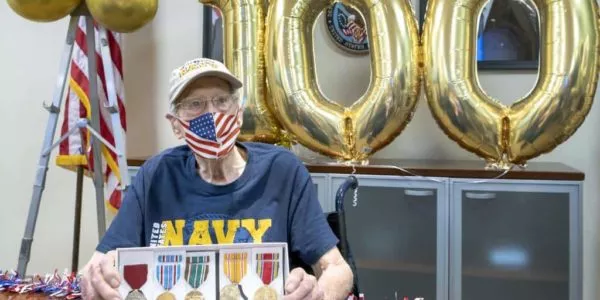By Northwest Florida Daily News/USA TODAY NETWORK
World War II veteran Ralph Morris of Crestview celebrated his 100th birthday with friends, family, and caregivers at the Joint Ambulatory Care Center in Pensacola on Monday.
Morris, who enlisted in the U.S. Navy in 1942, was recognized during the brief celebration by Gulf Coast Veterans Health Care System (GCVHCS) Director Bryan C. Matthews.
“Our veterans are the reason we exist, and to celebrate the 100th birthday of an individual who was involved in one of the world’s greatest conflicts is an honor,” Matthews said. “(Ralph) Morris’ dedication to his duty serves as an example of what we — as an organization serving those who have served — embody, and I couldn’t be more proud to participate in this veteran’s milestone birthday.”
Morris, born June 13, 1922, in Jefferson, Iowa, enlisted in the Navy in 1942, and eventually served aboard USS Sigsbee (DD-502) and later aboard USS Alfred A. Cunningham (DD-752). Morris served as a Machinist’s Mate (MM) during his enlistment, working in both vessels’ power plants.
Morris ended his service and opened a home furnishings store in Jefferson, Iowa, was married and has two daughters. He moved to South Florida in 1959 and worked as a salesman. He later moved to Tallahassee, and in 2019 moved again to Crestview to live with his daughter.
Click here to read more on yahoonews.com


